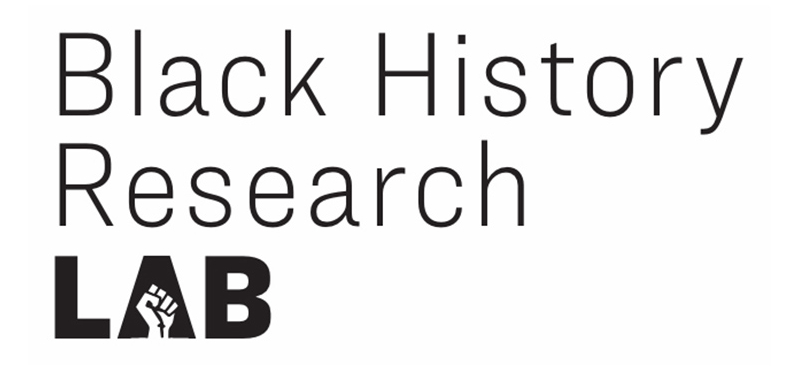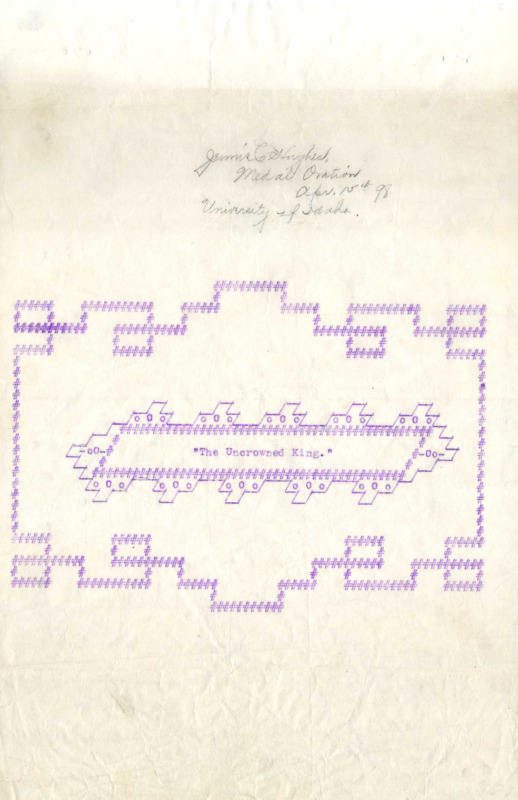About the Project
Contents: Black Students at U of I | External Influences | Diversity in the Twenty-First Century | The Africana Studies Program | The Black History Research Lab | Credits | Support
Campus Histories
by Dr. Sydney Freeman Jr.
The University of Idaho, whose main campus is located in Moscow, sits firmly within the Pacific Northwest. This region, and the broader Pacific Northwest as a whole, are considered one of the whitest regions in the United States. Founded in 1889, the University of Idaho has a long and storied tradition of academic and athletic achievement on the Palouse.
Documenting this history and these achievements is an activity that has happened many times over since the university was founded. Of particular note is the university’s official history written and chronicled by Katherine Aiken. However, several questions arise:
- How are these histories written?
- What groups do they focus on?
- Do we have a complete picture of the contributions that interweave to create this colorful tapestry of history?
As a predominantly white university located in a predominantly white region of the country, the University of Idaho possesses untold histories of Black academics, students, administrators, faculty, athletes and civic activism. Unfortunately, much of this history is nowhere to be found on campus; it’s not highlighted for current students of color to aspire to, nor are the trailblazing paths of students and faculty officially remembered or celebrated.
Black Students at U of I
However, some of this history has been well-documented. The first African American enrollee of the University of Idaho was also its first African American graduate. Graduating in 1899, Jennie Eva Hughes excelled both in the classroom and outside of it, graduating with a Bachelor of Science degree and earning a prestigious oratory medal during her college career. However, her success did not influence others to immediately follow in her footsteps, and it was not until her oldest son enrolled in 1919 that the University of Idaho had its second African American student (he unfortunately passed away during his freshman year).
Athletic Success
Great athletes like Gus Johnson, a 1963 All-American basketball player, and Ray McDonald, a 1965 and 1966 All-American in football, represented the beginning stages of the diversifying of the student population. Up until the late 1950s, the University of Idaho athletics programs, similar to the university student composition as a whole was almost entirely white. The recruitment of African American athletes began a steady change that would continue to grow and expand for the rest of the century.
In the 1980s, Dan O’Brien starred on the Idaho track and field team, and went on to be “the world’s best decathlete for the next 10 years.” O’Brien received the gold medal at the Olympics in 1996, won three consecutive world championships in 1991, 1993, and 1994, and set the world record in 1992. The University of Idaho athletic department named their track and field complex in his honor.”
Academic Success
Many Black students have also excelled academically at the University of Idaho. An article in the Argonaut highlighted that in 2014, the University of Idaho’s chapter of the National Society of Black Engineers (NSBE) won two nationally contested awards: the awards for most active chapter and highest GPA. These accomplishments are truly outstanding, but even more impressive in light of a U.S. Department of Education report showing that students of color are underrepresented in STEM fields (2016).
Beyond the areas of athletics and academics, Black students at the University of Idaho have historically been involved in social and civic leadership dating back to the late 1960s and 1970s, when national events and a rising Black student population began having conversations about opportunities for students of color and representation on campus.
Black Student Union
In 1971, following approval from the Board of Regents, a university-owned house was rented to the University of Idaho Black Student Union for use as a meeting space and center of Black culture on campus. Located at 706 Deakin Street, it was rented “at a nominal cost after May 1971 for use as a meeting place.” After extreme damage sustained during the winter of 1972-1973, the building had to be demolished, forcing the Black Student Union to other accommodations on campus.
An article published in the Argonaut in 2016 highlighted the historic roots of the Black Student Union (BSU) on campus and how they took action to ensure that black students, whose off-campus housing applications were denied, had decent accommodations; black students frequently turned to living inside the BSU building. Although the BSU has not maintained a consistent presence on campus over the past few decades, its members are active leaders in their campus community; meeting with President Chuck Staben in 2016 to recommend structural and policy changes to increase diversity on campus.
External Influences
Black influence at the University of Idaho is not merely limited to those who have attended the university. Internationally acclaimed jazz musician “Lionel Hampton and his New York Big Band” made their first appearance at the University of Idaho’s jazz festival in 1984, beginning a close relationship that led to the festival adopting Hampton’s name in 1985, and the university’s school of music to be renamed the Lionel Hampton School of Music in 1987.
This close relationship and the growth of the now renamed Lionel Hampton International Jazz Festival led to a most impressive honor in 2007, when the National Medal of the Arts was “awarded to the Lionel Hampton International Jazz Festival to honor the legacy of jazz music education at the University of Idaho. This is the first time that the nation’s most prestigious arts award has recognized the contributions of a program at a public university.”
Diversity in the Twenty-First Century
The mid 2000s saw a major step forward in the acknowledgement of the need to promote and highlight diversity on campus. In 2006, Mark A. Edwards was appointed the first Director for Diversity and Community (a position that reported directly to the university president).
Other important leadership figures during the 2000s include:
- Michael Satz, former Interim Dean of the College of Law at U of I, Associate Vice President and Executive Officer University of Idaho Boise and Southwest Region.
- Hassel Andre Morrison, Associate Dean of Student from 2015 to 2018
- Lynda M. Freeman, becomes the 1st Black woman faculty member in WWAMI (2016)
- Raymond Dixon- becomes 1st Black tenured faculty member in the U of I College of Education in (2017)/became 1st Black Administrator in the College of Education as Chair of Curriculum & Instruction Department in 2018
- Dr. Wudneh Admassu was the first person of African descent – born and raised in Ethiopia – to become UI full professor, served as Chair of the Chemical Engineering Department from 1998 to 2005
- Romuald K. Afatchao is a clinical professor and the associate director of The Martin Institute and the Program in International Studies . He is a co-founder of the Africana Studies program.
- In 2019, Professor Shaakirrah Sanders became and is the only Black woman to be a full professor at UI.
- Dr. Sydney Freeman, Jr. in 2021 was promoted to full professor at University of Idaho, making him the first African American man, descended from slaves. 1st black Associate Professor and Full Professor in the College of Education at U of I.
The Africana Studies Program
The establishment of the Africana Studies Program and Minor in 2018 was another important moment for Black progress at the university. In 2017, undergraduate Annysia Hoffman approached Associate Professor of Sociology Kristin Haltinner and suggested that the University of Idaho needed a program in African, African-American, and/or Black Studies. Hoffman was an undergraduate student in Professor Haltinner’s sociology courses and coauthored a book chapter on the history of Racism in Idaho with Haltinner and fellow undergraduate student Leanna Keleher.
In responses to Hoffman’s request and with the support of other students, Haltinner spoke with Dr. Freeman and Dr. Romuald Afatchao in International Studies. The three of them approached the CLASS Dean at the time, Andy Kersten. Dean Kersten agreed there was a need for the program.
Drs. Afatchao, Haltinner, and Freeman completed the paper work to establish the minor, lobbied Faculty Senate for the proposal’s passage, and the program was formally approved by the Board of Education the following summer.
In Fall of 2018, Professor Haltinner served as the program’s first director. In 2020, Haltinner went on sabbatical and Dr. Barry Bilderback and Dr. Jan Johnson stepped in as co-directors. Currently, Dr. Johnson directs the program.
The Africana Studies Minor draws classes from a number of disciplines and offers a co-taught capstone in which each affiliate faculty member contributes content based on their area of expertise.
The Black History Research Lab
Although these recorded achievements of Black students, faculty members, staff, administrators, and friends of the University of Idaho are impressive, they are hardly visible to prospective students, employees, and the community. The Black History Research Lab project aims to document the successes of underrepresented educators and students at the University of Idaho. It will also set a precedent at the University of Idaho for the study and documentation of the history and contributions of racially and ethnically underrepresented groups to the university. Above all, this project seeks to uncover the hidden history of Black students, staff, faculty, and administrators at the University of Idaho so that we can document and recognize the contributions and challenges faced by a underrepresented population within the greater context of working toward a more inclusive and diverse university population and culture.
Credits
The content for this digital exhibit and the concurrent physical exhibit featured at the library from February 4, 2022 to March 4, 2022 include contributions from Black History Research Lab students, U of I Library Staff and Faculty, and other staff and faculty members from across campus, including:
BHRL Students
- Brody Gasper
- Bailey Guyette
- Derek Higgins
Library Staff
- Devin Becker
- Kevin Dobbins
- Sara Szobody
- Olivia Wikle
- Klytie Xu
Campus Contributors
- Matt Martin
- U of I Creative Services
Support
Funding and support for this project are provided by:

